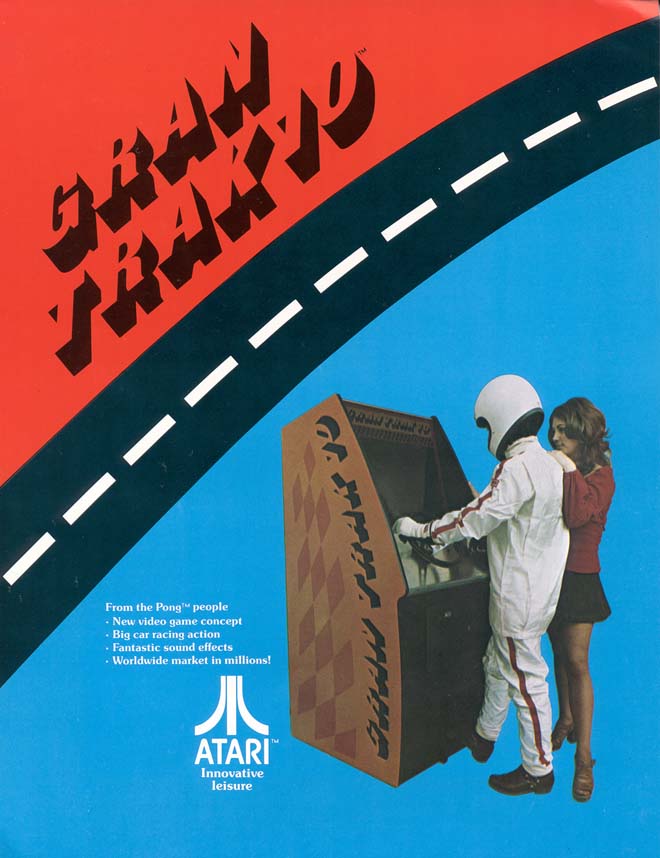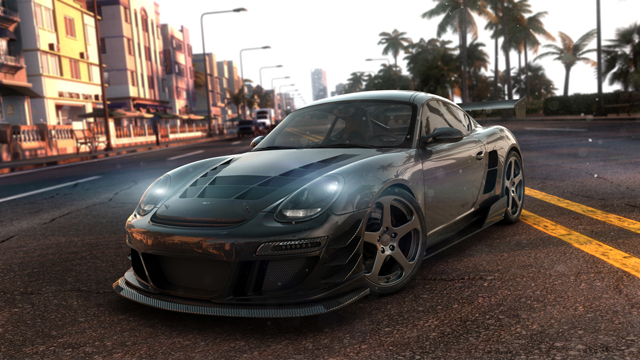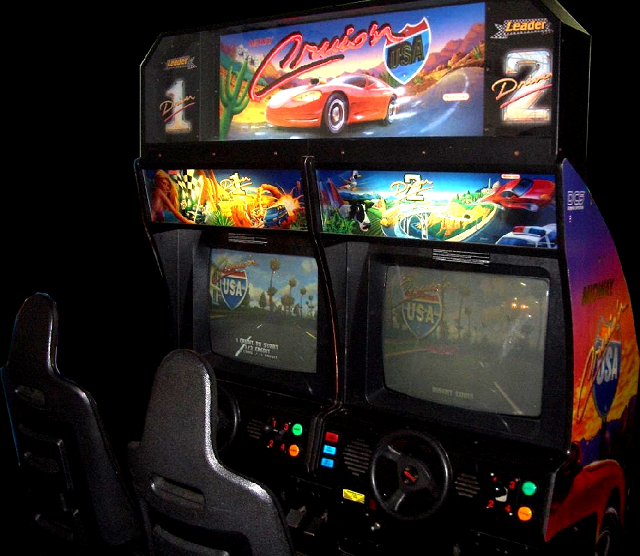Way back, in a faraway place, a land before time, a time before internet, turbo jets, and space cadets, going back to when thumbs weren’t invented and movies weren’t listed… okay, not actually that far back. But before console gaming systems were the craze, there were arcades (some are still around but we’ll get into that). This of course is after board games but before the X Games, all entirely another history lesson for another time. Today, it is about arcade games; specifically, the racing type.
Many early inventions of the standard arcade game can be dated back to the early '70s—simple in structure and easy to play. Tons of creative credit should be given to Atari for being one of the major pioneers of the genre. To this day, most game designs of the genre still follow the original molds except with upgrades in technology. They harken back to a time when we were kids, running into the arcade with a pocketful of quarters and having no intention to leave until that top time was met.
Since the debut of arcade racing, popularity has steadily risen through the years. It’s actually quite incredible how far it has come. Before mega superstar series such as Need for Speed hit the scene, games like Speed Race and Gran Trak 10 were popular. Both were controlled by joystick and you would watch the plain scenery scroll vertically through, as you try to avoid random objects on the road. Sounds strange now, but it was fantastic for its time. Think about it, in a period before private computers were the thing, one could go down to the local milk store, drop a quarter (probably a nickel back then) into a machine, and have control over what’s right in front of their eyes.
Now fast forward to the '80s, where technology began to blossom. The addition of finer details were made possible—music, different camera views, even right and left turning. It was a whole new ball game. Designs of steering wheels, gear shifts, and speedometers were already present, but with the development of graphics, the feel of a more realistic racing game began taking shape. Through the years, different companies experimented with ideas to improve every aspect they could.

When it was possible to physically sit down, as if in the driver seat of a car, and have complete control over a virtual vehicle—clutch pedal and all—it blew the mind of arcade followers everywhere. Once word got out that folks could pretty much drive a car without actually driving a car, chaos struck, sheer bananas. Kids stole money from parents, parents looted banks to pay for the costs, banks rose interest rates, and the world was left in shambles. Okay, realistically it wasn’t anywhere near that… But interest in arcade racing took leaps and bounds.
For a long time, arcades reigned supreme as the go-to place to get your gaming fix. All over the world people were looking to break all-time records, play the latest releases, and just have some fun at the local arcade. But along the way, the development of console gaming evolved. By the early to mid-'90s, Sega and Nintendo had a console in numerous homes throughout the country. Still, kids were still looking to spend quarters on Rush, Formula One Grand Prix, and other awesome games of the time. It was in that decade, that Need for Speed was created and would eventually take over as one of the most dominant selling racing simulators.
As time went on, the need to stick with the times continued. Thousands of arcades began to go extinct and, with it, our beloved racing machines. Even with the rise in interest with arcade racers and games in general, on consoles, it isn’t exactly clear why arcades themselves had to go. Sure, a bunch weren’t profiting as well, but I’m willing to bet if the proper time and effort went into legit arcades, people wouldn’t continue to flock to the best ones around.
These days, the quantity of a few different genres of games has gone up, but the quality is far below par. It is possible to walk into any given arcade and see as many as ten different racers, but all of them differ only ever so slightly. This lapse in quality allowed the console in part to see an open lane and shoot through it.

The downfall wasn’t actually in the changing of times insomuch as it was in the pressure to make money. Companies wanted to develop games for the appropriate systems they thought would make the most. With the success of arcades overseas, there was no reason the same couldn’t be said about the States, but now the newest and best racing titles are fashioned mostly just for consoles. This affected the availability to play through different platforms tremendously.
The 2000’s catered for a shift in interest. With consoles being the focus in production, arcades had no choice but to decline. Here in the States, it’s becoming tougher to find classic arcades. Many of the best games are now relics and we are forced to relive our childhood on watered down machines in spots like Dave & Busters. Fortunately, the downfall of such a glorious time hasn’t hit bottom everywhere. In particular, arcades in countries like Japan and China are staying afloat. That said, there is still high interest in specific areas and of course not to mention the world of “underground” gaming, where people will bring their own driver wheels and controllers just for a 45-second contest.
Most of it boils down to creativity and what there is to offer. As said before, right now one of, if not the most popular arcae racing title ever created, Need for Speed is being challenged by a newcomer. Ubisoft’s The Crew has fashioned an open-world racing field that allows anyone to hop into the game and drive, from California to New York and anywhere in between, as if doing it in real life. I can imagine an arcade model of the game with smaller distances between cities but actually playing in the arcade with your buddies online. [Racing simulators like Gran Turismo or Forza Motorsport have taken a good chunk of the pie as well. ~Ed. Nick]
So how far will arcade racers go? And how far will we drift away from the classics? Bigger, bolder, fresher isn’t always the best fix. Sometimes sticking with simplicity is the best way to go, and arcade racers should remind developers of that. Because if there ever comes a time when they've outlived their stay in the arcade, it’d be nice if they were at least appreciated and remembered.








